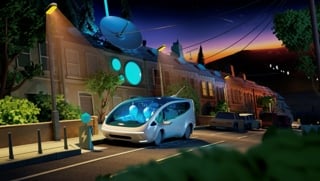By Richard Yarrow
More than 58% of the UK population now own a smartphone, and 19% have a tablet.
Globally, it’s believed there are more mobile devices on the planet than toothbrushes.
Alarming for dental hygiene, but with the explosion in 24/7 surfing, also important for anyone involved in retail.
Nathan Coe, group director of Auto Trader, summed the situation up: “Car dealers need to embrace the new world and ensure their businesses and vehicles are presented optimally, regardless of the device their customers are using.”
The answer is a cross-platform digital strategy.
In short, it’s the optimisation of a website for desktop, mobile and tablet use so it all looks engaging, is consistent and provides a good consumer experience.
The latter point is key because Joe Public has very quickly learned to appreciate the finer points of online etiquette.
Auto Trader research has found 57% of people refuse to recommend a business with a poorly-designed mobile website, and 40% immediately turn to competitor sites.
Coe said: “A dealer’s ability to ‘meet and greet’ effectively on the digital forecourt will result in increased leads, conversion, sales and profits.
Many are yet to fully embrace this transition and are subsequently letting competitors fill the gap.”
With consumer expectations so high, many industry experts now feel it’s almost more important to deliver a high-quality first impression in the digital world than it is in the real one. In the latter, customers must physically travel to a rival’s showroom, so may put up with a grumpy salesman or poor product knowledge.
Online, another seller is less than five seconds away.
Andy Coulthurst, managing director of Motors.co.uk, said: “Dealers need to think not just about how potential buyers are accessing their site, but what information they might want and how this might differ from device to device.
"Our experience shows customers tend to use each in a subtly different way.
"For instance, someone will probably use a desktop or laptop to conduct their initial round of vehicle searching, but turn to their mobile on the morning of the visit to a dealership to check the postcode.”
Obviously every user is different, but it’s a critical thing to understand when it comes to the way key information is presented on each platform.
Coulthurst added that getting the message right on each digital broadcast channel – eg, Facebook, Twitter or YouTube – was also important.
Consumers on these websites have quickly come to expect to be informed, entertained, or incentivised in return for their attention.
Success is also about speed of response.
Of 40 dealerships approached by the Motors.co.uk team on Twitter, just 12 responded to requests for information on their latest deals and only half of those managed to do so within an hour.
Four directed the interested consumer to their website with no additional information, two asked the consumer to phone them and one asked for a Twitter ‘follow’ in order to have a conversation via direct messaging.
Average consumer uses 18 sources
Coulthurst said: “We chose dealers who listed their Twitter profiles on their website and were actively broadcasting tweets, so we were expecting a fairly high response rate.
"What this shows is that just because dealers have a social media presence, it doesn’t mean they are using it effectively.”
Hugh Dickerson is head of automotive at Google, and in a previous life worked with car OEMs, distributors and retailers at regional, national and international level. Today his team helps companies understand the digital world to create profit.
“We quote that the average consumer will use more than 18 sources on the route to purchase and if they’re under 25 they will use 25 sources.
But they won’t do it in a linear way like a sales funnel, so the dealer needs to be ‘always on’ in desktop, tablet and mobile.
It’s not enough to be in just one place because you’re essentially closed to business in two others.”
Marketing budget
Google’s research shows that, since Christmas 35%, of automotive traffic has come through mobile or tablet. Crucially, two-thirds of online shoppers use more than one device on the route to purchase.
“You need a mobile site because the average consumer doesn’t have the finger of a Sindy doll and the eyes of a hawk to read type that’s 1mm high,” said Dickerson.
“We’re increasingly expected to book a cinema with a phone so why shouldn’t people look at a car?
"For anyone who hasn’t got a mobile site, it’s adapt or die.”
Dealers who remember a simpler time in car retail will probably be thinking all this sounds expensive.
Dickerson said their problems aren’t generally financial because they all have a marketing budget.
“Ask yourself does your media mix reflect where the consumer is.
I would say in many cases in the auto industry it doesn’t.
It’s unfair to generalise, but with quite a few there’s a legacy issue.
They’re allegedly experts in car retail so digital could be frightening.
But I don’t think that’s the case. You don’t need a computer science degree.”
The challenge today is about getting the best of offline online and vice versa.
That means car showrooms need to be more digitally smart, while websites have to become more human.
The concept of ‘sharing’ is another one that car dealers need to appreciate, because today’s consumer is empowered, savvy and keen on what Dickerson called ‘social proofing’.
He said: “The vast majority of consumers like to share their experience post-purchase.
"That used to be telling your mates down the pub, now you can inform thousands in a couple of key strokes.
"It can be very powerful in a positive and negative way, so retailers need to understand how to manage that.
"Today, the voice of mass third-party opinion is more important than the voice of Jeremy Clarkson.”

















Login to comment
Comments
No comments have been made yet.